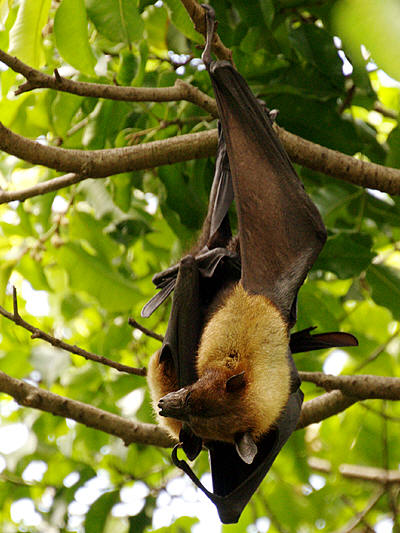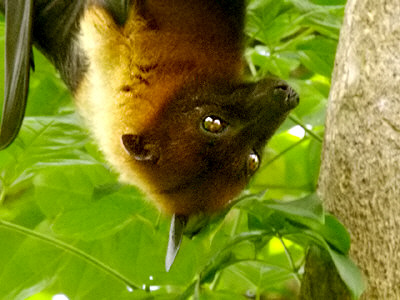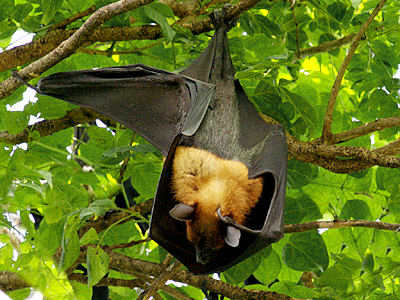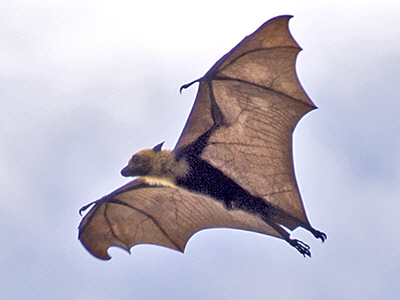
Fig 1

Fig 2

Fig 3

Fig 4
|
Order : CHIROPTERA
Family : Pteropodidae
Species : Pteropus lylei
Forearm Length : up to 16 cm
Weight : up to 480 gms
Pteropus lylei
(Lyle's Flying Fox) is a
species of limited distribution, which roosts by day in large colonies in
protected areas of villages, towns and cities, such as the leafy compounds
of Buddhist temples and other buildings where they can be free of
persecution.
At sunset they radiate out into rural areas to feed on fruits and, as a
consequence, they may be killed by farmers and landowners when they raid
fruit orchards.
The species can be distinguished from other flying foxes on the basis of
size and fur colour. The wing membranes are dark brown and the lower back
has short, brownish-grey fur. Fur on the upper back, chest and throat is
orange and fluffy. The head is dark brown, and fur on the underside is
generally darker, sometimes black.
Lyle's Flying Fox occurs in the central plains of Thailand, including towns
around the capital Bangkok, and parts of Vietnam and Cambodia.
Fig 1 : A Lyle's Flying
Fox rests by day in the shade of a tree in the compound of a Buddhist
temple.
Fig 2 : Flying foxes have intelligent, dog-like faces with forward-facing eyes.
Fig 3 : This bat is scratching its head with its thumb. Note the
characteristic sharp demarcation between the orange fur of the upper back,
and the brownish-grey fur of the lower back.
Fig 4 : Example from Siem Reap, Cambodia.
References :
Francis, C.M. 2019. A Field Guide to the Mammals of South-east Asia. Second
Edition. New Holland. 416 pp.
|